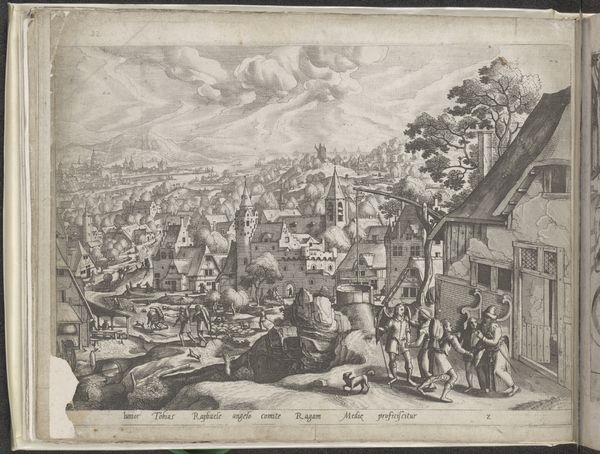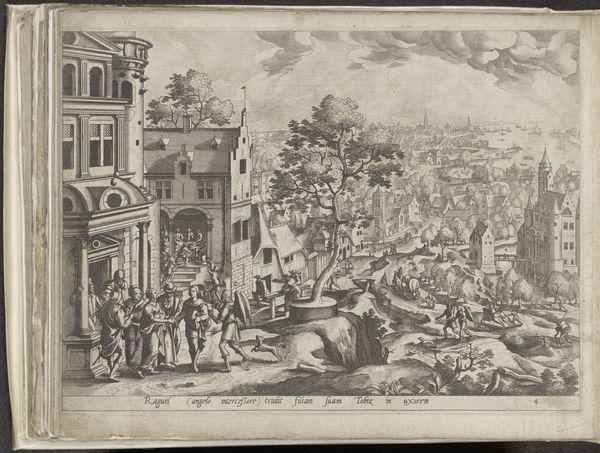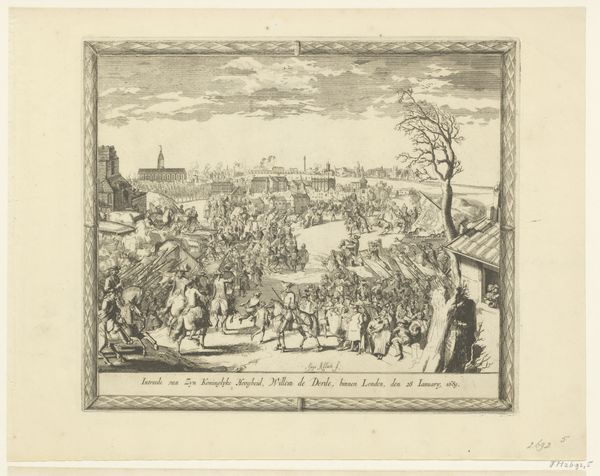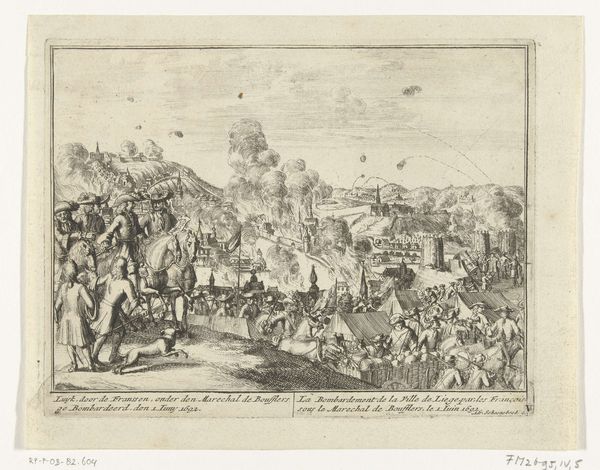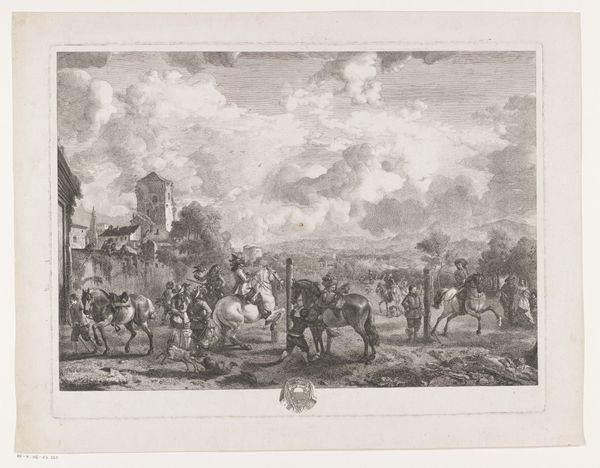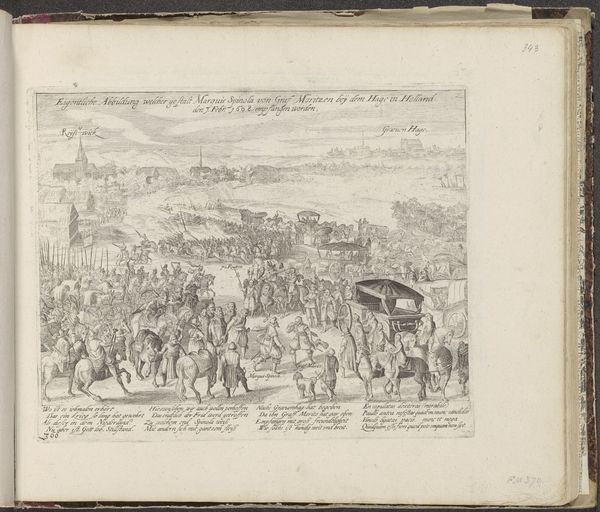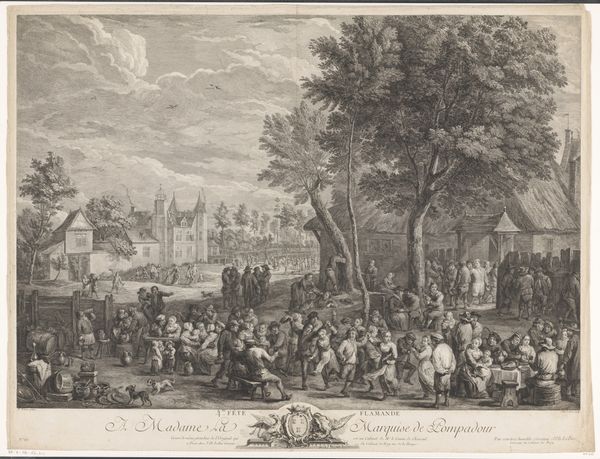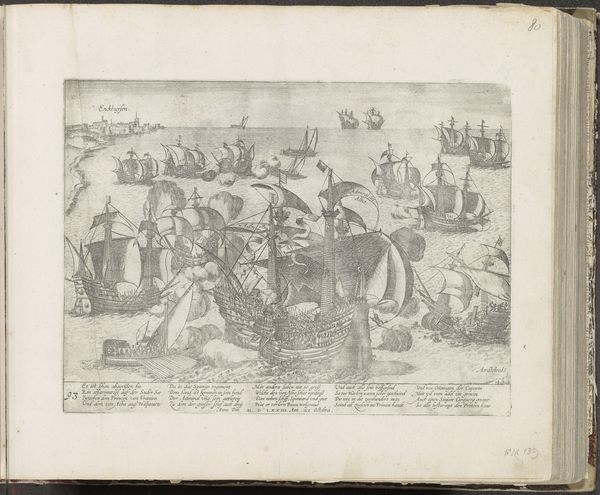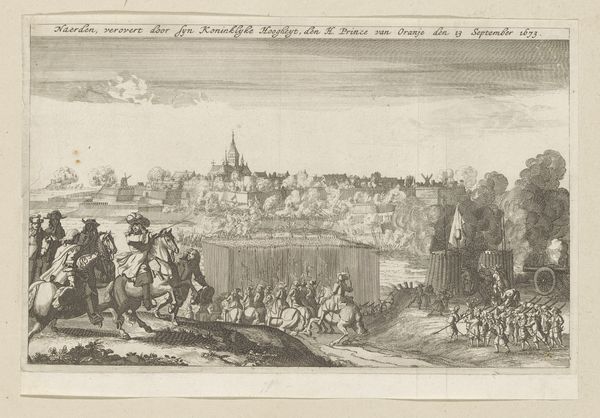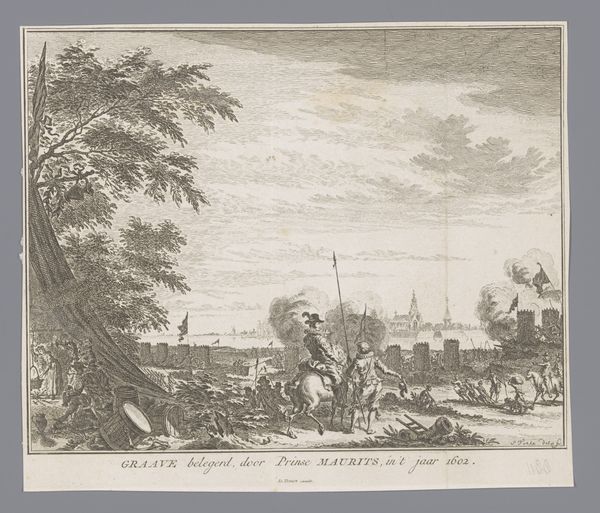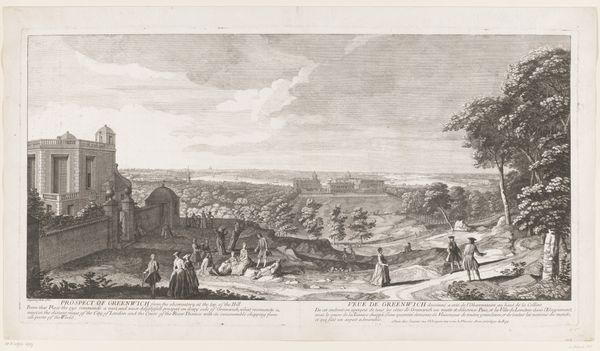
print, etching
#
pen drawing
#
mechanical pen drawing
# print
#
pen sketch
#
etching
#
sketch book
#
landscape
#
river
#
personal sketchbook
#
sketchwork
#
pen-ink sketch
#
pen work
#
sketchbook drawing
#
genre-painting
#
northern-renaissance
#
sketchbook art
Dimensions: height 237 mm, width 325 mm
Copyright: Rijks Museum: Open Domain
Curator: This etching, "Tobias Returns Home," created sometime between 1563 and 1567, is attributed to Johannes or Lucas van Doetechum. What strikes you first about this detailed scene? Editor: The overwhelming density of detail. Look at how closely packed those buildings are. It’s almost claustrophobic, yet the landscape sprawls far into the distance. There is such contrast between open space and constriction. Curator: This print is rooted in a pivotal narrative: the return of Tobias, from the Book of Tobit. I'm drawn to think about familial dynamics and homecomings in relation to the diaspora. How often are such returns depicted as uncomplicated and joyful? What expectations, shaped by family, society and religion, meet the returning traveler? Editor: Agreed. The artist uses line work with astonishing virtuosity, a delicate web really. Semiotically speaking, notice the use of sharp, clear lines for objects closest to the viewer, and as our eye recedes into the depth of the piece, the lines become more ambiguous. This guides the viewer into a spatial relationship, which speaks volumes. Curator: Yes, this spatial relation informs a broader discourse. Here, the story of Tobias returning to his parents intertwines with societal norms regarding familial duties, geographical displacement, and reconciliation in times of religious upheaval, or perhaps political exile. There's more than a hint of a societal demand for obedience. Editor: That contrast creates a certain tension, doesn't it? Now, focusing on its structural qualities, the way the figures and the architecture create a dynamic interplay, you’ve got these clustered buildings almost like a physical embodiment of societal pressure pushing inward and, at the same time, the freedom of landscape opening into new possibility. Curator: The materiality speaks volumes as well. That such density can be achieved with etching tools is extraordinary. Thinking about gendered labour practices, access to art education, as well as the commodification of religious narratives, further contextualizes this artwork, I think. Editor: Absolutely. Well, from a formal standpoint, considering the etcher’s engagement with texture and form really opens up questions regarding their comprehension of optics. It certainly does highlight how they perceive the world spatially and tonally. Curator: This print pushes us to think more deeply about these artistic periods and the complexities in human interaction during tumultuous periods in history. Editor: I agree, its artistic language helps to understand the period and perhaps, to reflect our place within today's equally complex landscapes.
Comments
No comments
Be the first to comment and join the conversation on the ultimate creative platform.
